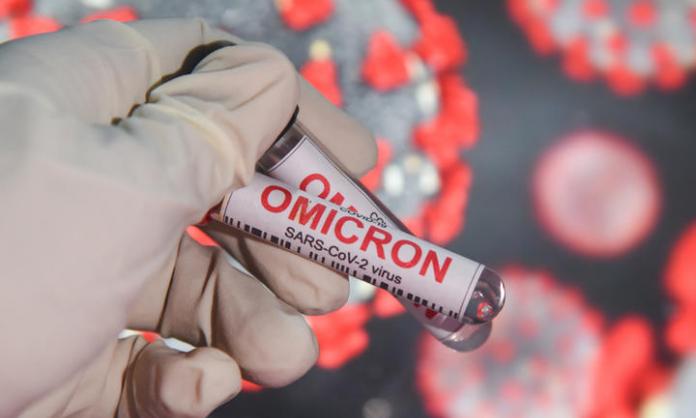Australia is facing an unprecedented wave of COVID-19 infections as state and federal governments stare down the population and refuse to implement adequate public health measures to stem the tide. Led by New South Wales Premier Dominic Perrottet’s and PM Scott Morrison’s ideological opposition to public health measures that might threaten profits, both Labor and Liberal premiers are culpable.
In mid-December, as New South Wales registered the most dramatic increase in COVID-19 cases since the beginning of the pandemic, the state government lifted most requirements for density limits and proof of vaccination and reduced regulations for mask wearing and QR check-ins. The message from Perrottet was to get into pubs, crowded shops and cafes and spend, spend, spend. The decision to abandon the most basic public health precautions just as cases were drastically rising was a reckless move that will cost lives and spread illness.
At the press conference at which these changes were announced, Health Minister Brad Hazzard cited modelling that predicted case numbers could reach 25,000 per day by the end of January. The government wound back health regulations at a time when many of the vaccinated have waning protection and are waiting for boosters, and when young children are not yet able to be jabbed.
Almost two years into the pandemic, the New South Wales health system remains underprepared for even a moderate spike in hospitalisations. Nurses and other health workers are overworked and underpaid—across the country, thousands have resigned, and an increasing number are being furloughed because they are catching the virus.
In the eight days since the “let it rip” announcement on 15 December, there have been 24,039 new cases of COVID-19 in the state.
Federal and state leaders, recognising that they had to be seen to be doing something, held an emergency meeting of the National Cabinet on 22 December. It achieved nothing. After the meeting, Morrison just insisted that limiting the spread of the virus comes down to “personal responsibility”.
The response to the overcapacity of testing centres in Victoria and especially New South Wales was not to announce an increase in resources. Instead, the prime minister simply asked the states with low case numbers to consider removing the requirement for people from hot spots to have tests before travelling. This would simply hasten the export of the virus to every state whose borders are now open.
Even the Doherty Institute—whose modelling the federal government couldn’t get enough of when it appeared to support its argument to end lockdowns—now predicts a worst-case scenario of rapidly growing case numbers lifting hospitalisation rates, pushing emergency departments to capacity and filling the nation’s intensive care units. The New South Wales government’s response is to claim that the mounting case numbers don’t matter.
Epidemiologist Adrian Esterman took up this point. “Firstly, as case numbers run into their thousands, we will inevitably see a rise in hospitalisations and deaths”, he wrote in the Guardian on 17 December. “Secondly, everyone seems to have forgotten about long COVID. About a third of COVID survivors are likely to suffer from symptoms three to six months after being infected, including people who have no symptoms from the initial infection. So case numbers are still very important.”
While number of deaths has not yet risen significantly in New South Wales, hospitalisations have more than doubled (from 166 to 347) since the health measures were removed. Despite the intransigence of National Cabinet, there are growing calls to bring them back.
As Sydney Morning Herald articles reporting on the cancellation of around 20 percent of bookings at hospitality venues make clear, there is a kind of “lockdown from below” going on as people change their plans for fear of catching the virus or infecting friends and family. There have been reports on Facebook of customers successfully demanding that their local IGA supermarket reinstate QR codes if they wanted them to shop there.
No such sense from the New South Wales government. Even today’s announcement that QR codes will be reinstated in some high-risk venues is too little too late. It will complement the DIY contact tracing that was introduced on 15 December, under which a “casual contact” is now defined as pretty much anyone other than the very closest household contacts of people who get COVID. The government advice is that “you might find out through your workplace, your education facility, or directly from the COVID-19 positive person. You will not be contacted by NSW Health”. It is then up to you to inform others you may have been in contact with.
On 19 December, University of Sydney infectious diseases paediatrician Robert Booy, who has previously supported decisions made by the state government, summed up all this “freedom”: “The restrictions in NSW are being unwound too quickly. We are now ideologically driven and the public health advice has become secondary”.
Governments have not left us with no protection. We supposedly can count on that much vaunted “personal responsibility”—government code for “not my responsibility” with the added bonus (as far as they and the bosses are concerned) that if it turns out to be a disaster, we’ll be the ones to blame. To add insult to injury this has been accompanied by a series of patronising analogies between defeating a pandemic and individuals using sunscreen. Satirist Pauline Pantsdown drew out the ridiculousness of this when she wrote: “I didn't wear sunscreen yesterday. Now, everyone else who was on the beach has skin cancer! Sorry everyone!”
Social media has been ablaze with angry responses. “Please everyone just take personal responsibility for the PCR tests you can't get, the rapid antigen tests you can't buy, the other people not wearing a mask everywhere you go, and the COVID you're pretty much definitely going to get now”, one person wrote. The Chaser had an apt headline as well: “Traffic laws abolished in NSW as residents are encouraged to show personal responsibility instead”.
The majority of people have shown personal responsibility again and again through the pandemic. But we need public health measures, starting with the reinstatement of all those recklessly abandoned on 15 December. Reinstate compulsory masks, density limits for indoor venues, QR code check-ins everywhere, vaccine certificates to enter all indoor venues and provide free rapid antigen testing across the community—not to encourage people to go out more, but as a public health measure for those whose jobs mean they cannot stay at home.
Non-essential workers should be paid to stay at home, and bosses should be forced to implement all necessary health and safety measures such as adequate ventilation at those workplaces that are genuinely essential.
Morrison continues to assert that the time for lockdowns is behind us, even as governments in Europe, where the virus is more out of control, are re-introducing them. For him and the bosses, this is another aspect of the Doherty Institute advice that is even more unpalatable than the possible toll of illness and death.
The Doherty modelling shows that a hard lockdown could suppress the outbreak by the end of January, assuming 60 to 80 per cent of Australians received a three-month booster by then. The modelling was given to federal, state and territory leaders ahead of their National Cabinet meeting yesterday. It was ignored. Serious health measures interfere with profits. Patronising the population and demanding “personal responsibility” is free.
Perrottet says that his government is treating New South Wales residents “like adults” as he continues to push back against calls for renewed health measures. “What’s key to us is personal responsibility”, he said this week. “As we move through the next phase, case numbers will increase. That is the new normal.”
We have to continue to fight against this normalisation of avoidable deaths and illness.









